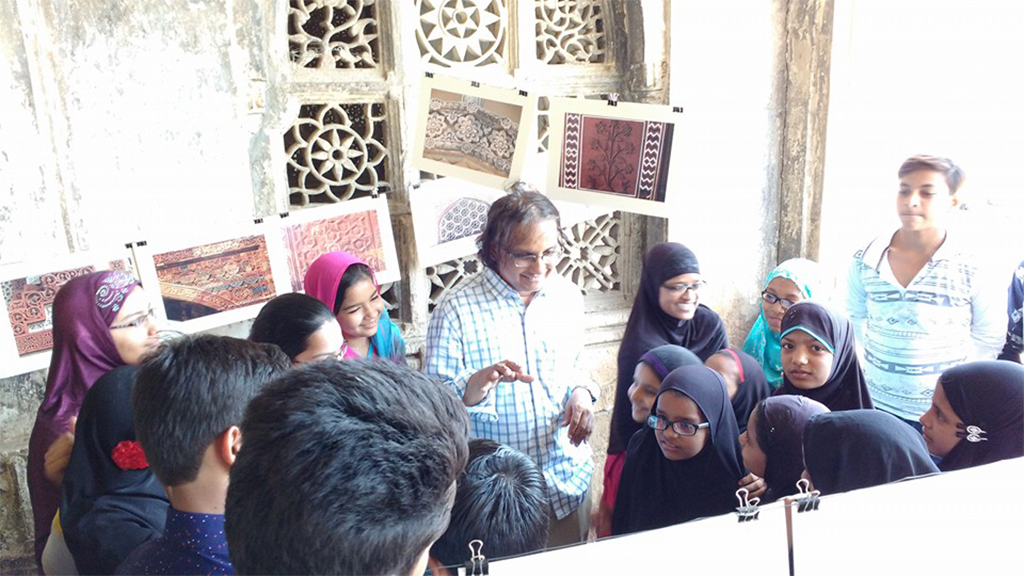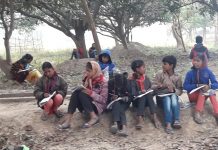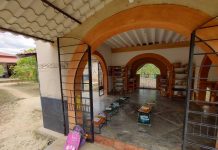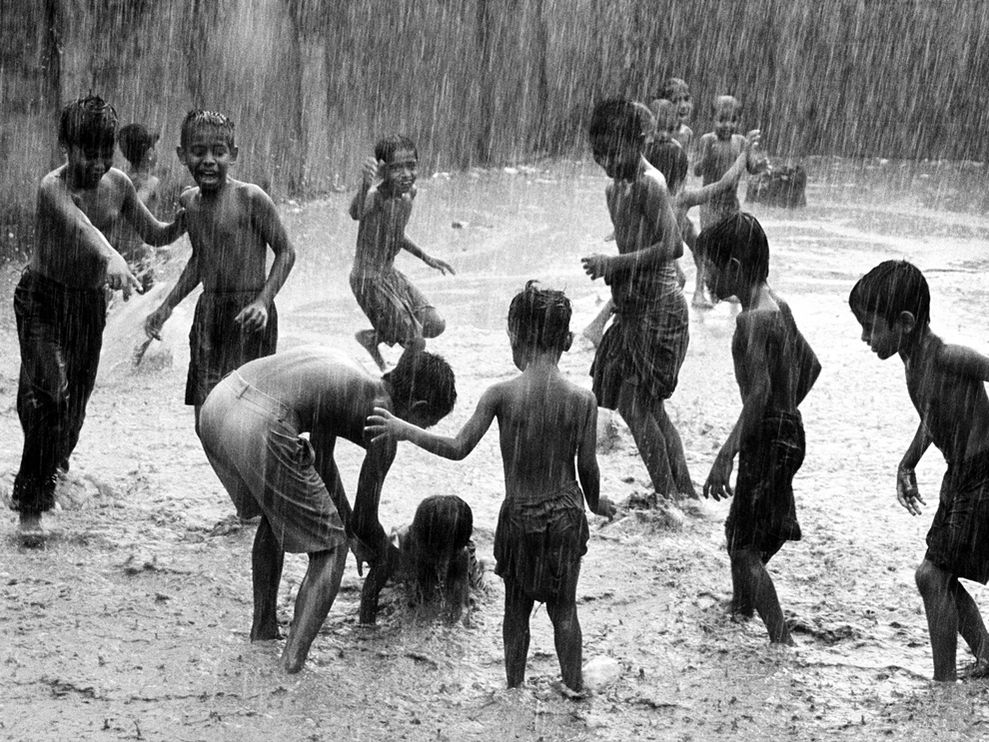Without a relevant curriculum that gives special importance to local concerns and needs no meaningful learning is possible. An archaeologist writes about the concrete efforts he made to make a difference in the way teachers and students look at the world.
Jitu Mishra is a Senior Educational Specialist, working with Educational Initiatives Pvt Ltd in Ahmedabad, India.
I am an archaeologist by training and have no formal background in educational research. I stepped into education however accidentally in 2003. Over these years I have been deeply involved in a number of teachers’ training programme both at government and private schools. My focus has been however on history and civic education.
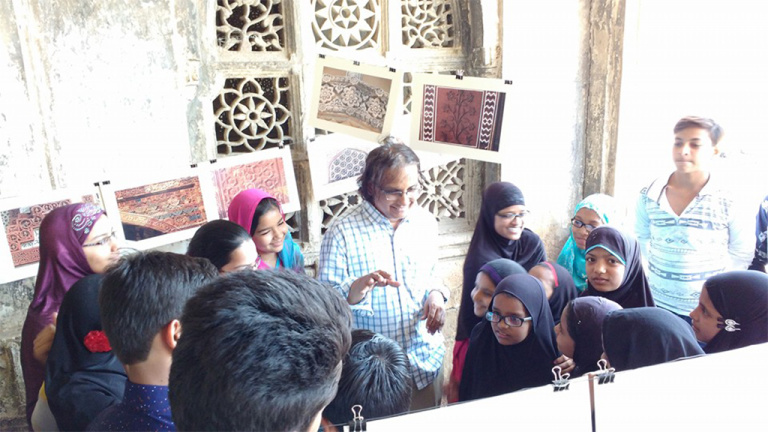
With relation to history education in schools, a fundamental problem I have seen is the lack of inquiry approach. Teachers, both at private and government schools concentrate more on factual information. In my initial years I used to blame teachers but later I realized that the problem is with the curriculum structure and the way teachers are trained, not just teachers. In many schools, language teachers are often asked to teach history, because there are not many well-trained history postgraduates in India. As a result of this stopgap approach, ‘history’ is either taught straight from the textbooks or in form of storytelling, especially in lower classes. Like any core subjects, trends in historical research have gone through significant changes worldwide. There are emerging disciplines like feminist history, subaltern history, historiography, which dominate the historical research. The language teachers are mostly ignorant about these trends and therefore unable to impart these modern ideas to their students.
To me, history like any core subject should be based on problem solving. For example, the caste discrimination in India is one of India’s core social problems. To deal with this problem, one must look at primary sources in history, because the problem itself is deep rooted in history. However, in our school system, such problem oriented topics are hardly addressed. Teachers or students may know how the caste division evolved in the Vedic time, but after that how that affected the Indian society at large are not addressed.
The study of ‘cause and effect’ is one of the basic approaches to the discipline of history. In historical terms, every event has a cause, and is itself the cause of subsequent events. To introduce this concept, in 2010 I had organized a teachers’ workshop at Dholavira.
Dholavira is an Indus Valley site located in an island in Greater Rann of Kutch. The site is situated in a harsh climatic zone. The present population of Dholavira and nearby villages are either marginal farmers or cattle herders. A few also own camels. The objective of the training programme was to introduce inquiry method to teachers. About 20 participants including two senior Mathematics teachers were part of the team. While we spent a day at the site understanding the various aspects of Indus Valley Civilisation, the next two days were spent at the village. Teachers in groups conducted survey on local subsistence, impact of global climatic change on their life, impact of modernisation, inter-dependency between communities, traditional architecture and material culture, their folk history and so on. It was an enriching experience for teachers. In one evening they got chance to interact with Prof Shereen Ratnagar, a noted historian/archaeologist of India. We returned after three days finishing the training.
Two years later, I was invited to guide a group of 11th grade students by one of the Maths teachers at Dholavira. After returning from Dholavira, the teacher was over excited. She had made a plan to apply the concept of mathematical modelling on Dholavira ruins and the project was given to her class 11 students. It was indeed a good idea, but she could have done it at Rajkot itself. There was no need to travel to Dholavira, some 250 km away. When she offered her idea to the school management they were also excited and approved it, but without understanding that the purpose of Dholavira trip which I had organised had a different purpose.
In this context, I would like to highlight the lack of clarity both among teachers and school management. As there is a buzz for innovations and implementation of new ideas, both management and teachers go for them without understanding how they are relevant to the situation. They simply mess up in the process.
Rachana School Experience:
In 2004, I had initiated a heritage club in Rachana School, Ahmedabad for the 8th grade students. Rachana is a progressive CBSE school and open to experimentation, thanks to its visionary principal Mrs Gopa Ghosh.
For the heritage club to what we called ‘Sanskruti’, we had designed 18 modules consisting of 12 classroom sessions and 6 field trips in a year. Each module was centred on a problem driven topic such as India’s water related problem and how a conceptual understanding of India’s water heritage can address this problem. The club was active for two academic years and through this process Social Studies teachers also received training. They were exposed to some of current trends on enquiry method of teaching. Though the club was defunct after two years, but I remained associated with the school for a long time. From time to time I visited the school and designed a number of field trips and classroom projects. From this academic year we have started working together on a long term project, where teachers are playing a key role. The project is on revival of a historical water body at Viramgam, a medium sized town near Ahmedabad.
Called Munsar Talav, it is a composite heritage site consisting of a large water body and hundreds of miniature temples on its bank. It was built by Minal Devi, the mother of Siddharj Jaysinh, the well-known king of Solanki dynasty. It was considered as a tirtha.
However, like many heritage sites this water body is also covered with heaps of garbage. Some of the locals also defecate here. The local communities who should be taking maximum pride are ignorant about its historical aspects. The local school children have also very little understanding about the history of their place. Here I would not blame the children, but the curriculum planners, who hardly bother to include aspects of local history in the curriculum. The lake needed immediate attention before getting into further decay. This could happen only if the local communities are excited and sensitized. It is not an overnight job. It requires at least 2 to 3 years of commitment. I approached Rachana School for partnering with the project. The school authority immediately agreed. We designed the work assignment for different groups of students of class 8.
The following articles and video links may give the readers some idea at what intensity we are working at the heritage site for its revival.
https://www.facebook.com/Viramgam-Heriav/
http://blog.ei-india.com/2015/08/civic-lesson-in-a-heritage-site/
http://bethechange.asia/the-idea-of-india/
Before the project was kicked up teachers and principal visited the heritage site to get a firsthand experience. I briefed about the various roles for teachers and students. A Facebook page was created to communicate with the wider world on daily basis. One of the teachers is in charge of it. So far we have got about 250 likes and a wide viewership. On the next trip all the students (about 100) visited the site to get the first hand experience. The teachers worked as facilitators. On the third visit I found something remarkable, one of the best enquiry-based teaching practices in my career.
Teachers facilitated a socio-economic survey of 60 households living around the lake. It involved enquiries on their economic situation, educational background, facilities, skills and their relationship with the heritage site. The level of interaction was of very high standard. Some of the video links give idea about the interview process and the reaction of students after the interview.
This has become possible due to my long association with school, where teachers have imbibed a number of traits on meaningful teaching.
Government School Experience:
A week before while writing this article. I had a chance meeting the taluka head of Viramgam, the highest government official of the town. He is also the chairperson of the town’s oldest government school, MJ High School built in 1917, almost a century ago. It was built by a philanthropist to encourage girls’ education.
The officer’s concern – the school is not performing well in board exams. The pass percentage is only 30%. He wanted my intervention for improving the quality of education in the school.
The principal of the school, to whom I have met three/four times before this meeting had a different story. The school has strength of nearly 300 students (between class 9 and 12). Among these only 20% are girl students indicating a strong gender bias. Most of the students come from nearby villages as it is the only reputed government school offering subsidised education. Many of them have malnutrition body and compared to their age they look small. According to the principal, a large number of students of class 9 are not able to write in Gujarati. We have to give them admission since there is a pressure from the government and promote them to the next class. The school has limited teachers. They have not been trained on new trends in teaching methodology. Language teachers manage Social Studies teaching. Though the government has provided computers and LCD, but there are no academic resources, such as videos, books, etc. Teachers have closed hands as they are required to do a lot of government related work on working days. There is no involvement of local community. Parents are mostly uneducated and are not aware of the true value of education. Many of them don’t appreciate talent of their children.
A week later, I was invited by him to his village, which is about 30 km from Viramgam. I was accompanied by one of his sons, also a teacher. At his village I was introduced to his extended family, many of whom are teaching in various government schools. While having lunch together, we discussed in length about the problems related to education in their region.
One of their key concerns was the wrong curriculum. Many of the topics taught to students are found difficult. Students are unable to relate. Local communities are never consulted and motivated. There is a huge gap between what children need to learn, what skills they need to pick up, and what is being dumped on them. The principal of MJ High School is not critical of government. According to him, many of the government programmes have good intention, but implementation fails due to the lack of these insights.
My association with the government school teachers is not very old.
For last three years I have been associated with a couple of government schools both in urban and rural Gujarat through the corporate social responsibility wing of Torrent Power Ltd, an Ahmedabad based corporate. From time to time I visit these schools to impart training. I truly agree with what the principal of MJ High School had shared about the prevalent situation in govt schools. On many occasions, the training days had got rescheduled because of certain government programmes where teachers were asked to give their time. There are LCD and computer labs, but minimal teaching aids/resources. But against these odds there are a number of young and old enthusiast teachers, who are passionately trying their best to impart quality education to these underprivileged kids. They need to be brought under a network and mentored by outsiders like us. Their ideas need to be spread and acknowledged by well-known educationists of India.
Herewith I would like to conclude the article with the quote of Dan Rathi: ‘The dream begins with a teacher who believes in you, who tugs and pushed and leads you to the next plateau, sometimes poking you with a sharp stick called ‘truth’.
This article was published in The New Leam print issue.
The New Leam has no external source of funding. For retaining its uniqueness, its high quality, its distinctive philosophy we wish to reduce the degree of dependence on corporate funding. We believe that if individuals like you come forward and SUPPORT THIS ENDEAVOR can make the magazine self-reliant in a very innovative way.

